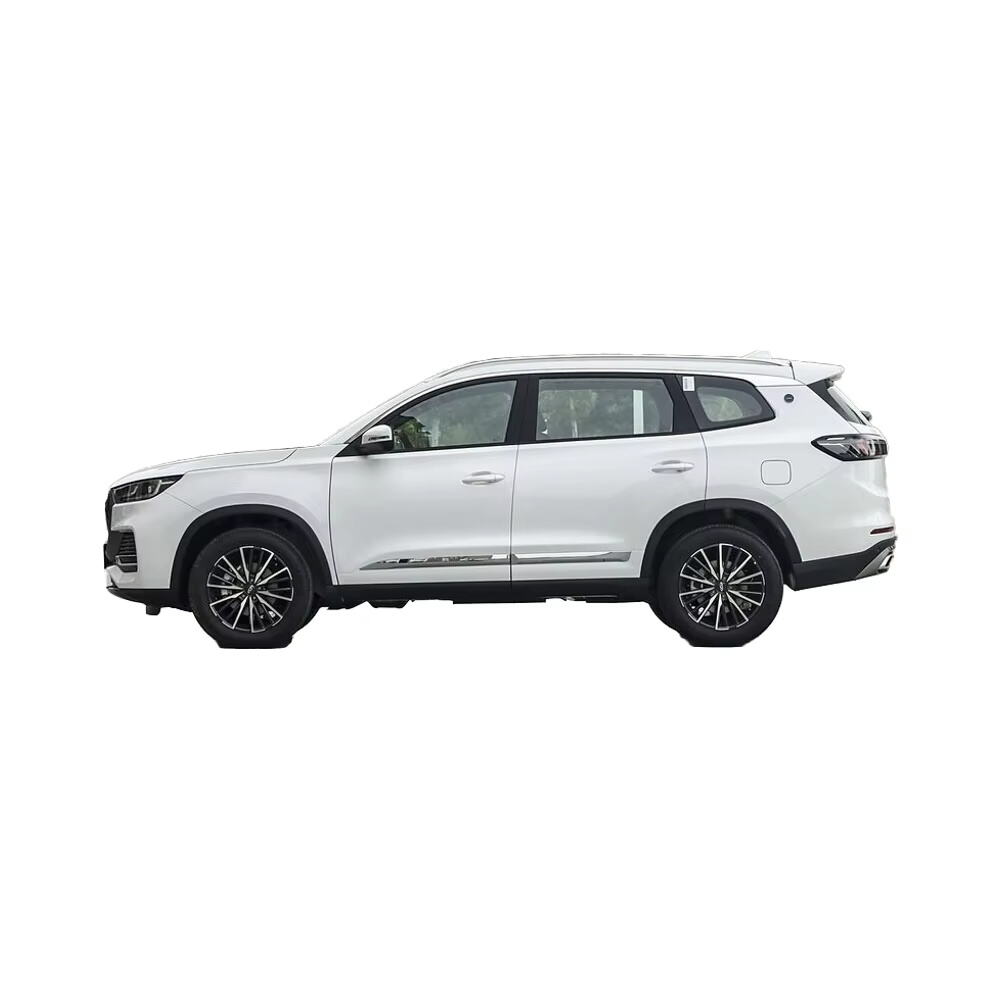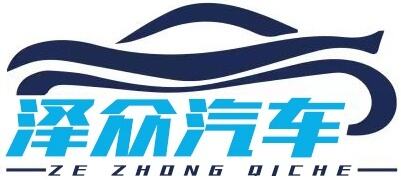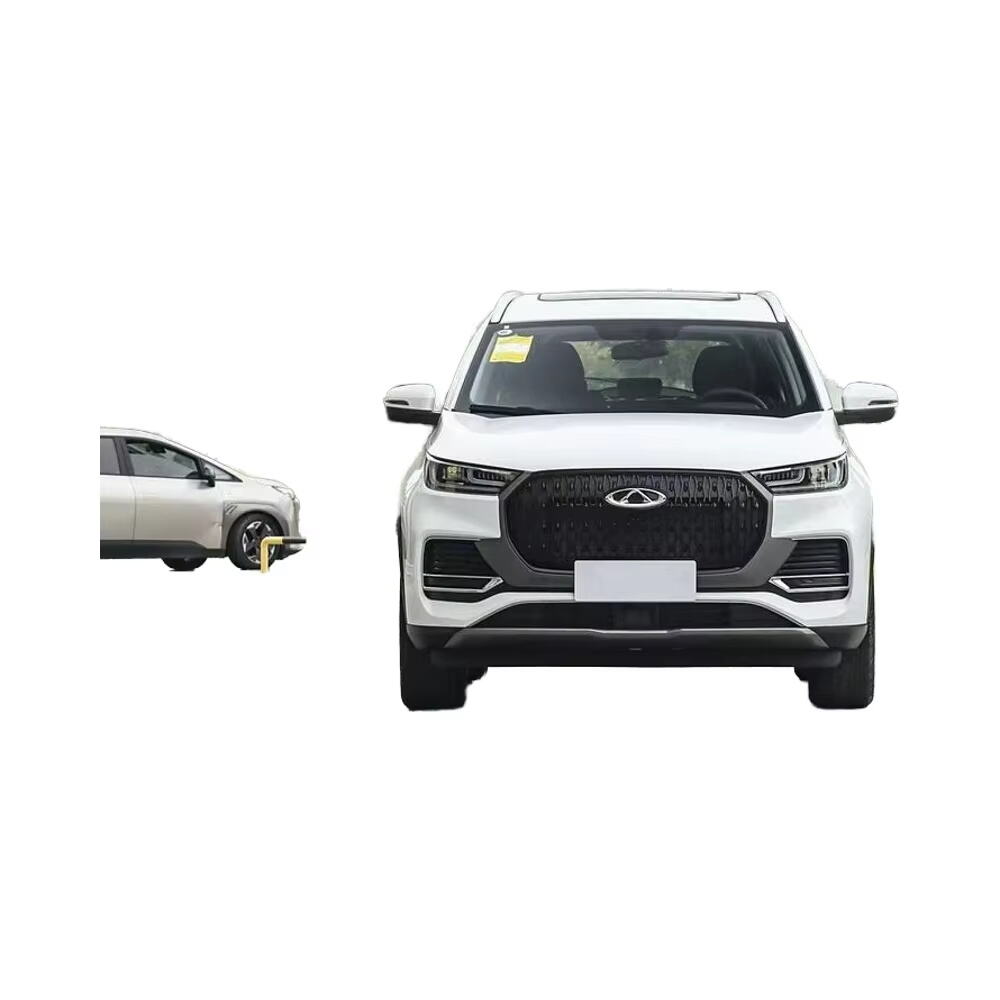ဒုတိယအကြိမ်ဝယ်ယူမည့်ကားများအတွက် အရေးကြီးသောအချက်များကို စိစစ်သုံးသပ်ခြင်း
အသုံးပြုပြီးသောကားတစ်စီးကိုဝယ်ယူခြင်းသည် စျေးနှုန်းကောင်းကိုရှာတွေ့ခြင်းထက်ပိုမိုရှုပ်ထွေးပါသည်။ တရုတ် ကားများ ဝယ်ယူသူများသည် ကား၏သမိုင်းကြောင်း၊ စက်မှုအခြေအနေ၊ ပိုင်ဆိုင်မှုစရိတ်များကို ဂရုတစိုက်စိစစ်ရန်လိုအပ်ပါသည်။ ရေချိုးခန်းတွင် ကောင်းမွန်သော ပိတ်တမံကိုရွေးချယ်ခြင်းသည် ကာလကြာရှည်ခံမှုကိုသေချာစေသကဲ့သို့၊ အသုံးပြုပြီးသောကားတစ်စီးကိုရွေးချယ်ရာတွင် စိတ်ရှည်စွာစိစစ်ခြင်းနှင့် အချက်အလက်များကို နားလည်တတ်ကျွမ်းစွာဆုံးဖြတ်ခြင်းတို့သည် အရေးကြီးပါသည်။ ဤဆောင်းပါးသည် သင်၏လိုအပ်ချက်များနှင့် ဘတ်ဂျက်တို့နှင့်ကိုက်ညီသော တရုတ်ကားတစ်စီးကိုဝယ်ယူရာတွင် အကျုံးဝင်သောအချက်များကို လမ်းညွှန်ပေးပါမည်။
ကား၏သမိုင်းကြောင်းနှင့် စာရွက်စာတမ်းများကိုစစ်ဆေးခြင်း
ပြုပြင်ထိန်းသိမ်းမှုနှင့် ပြုပြင်ခြင်းမှတ်တမ်းများကိုစစ်ဆေးခြင်း
အသုံးပြုထားသည့် ကာလအတွင်း ကားကို မည်မျှကောင်းစွာ ထိန်းသိမ်းထားခဲ့သည်ကို စုစည်းမှုပြည့်ဝသော ဝန်ဆောင်မှုသမိုင်းသည် ပြသပေးပါသည်။ တရုတ် ကားများ ရှင်းလင်းသော ထိန်းသိမ်းမှု မှတ်တမ်းများသည် ဝယ်ယူသူများအား ထုတ်လုပ်သူ၏ လမ်းညွှန်ချက်များအရ ပုံမှန် ဝန်ဆောင်မှုများ ပြုလုပ်ခဲ့မှုရှိမရှိ နားလည်ရာတွင် ကူညီပေးပါသည်။ ဤမှတ်တမ်းများသည် အဓိကအစိတ်အပိုင်းများဖြစ်သည့် အင်ဂျင်၊ တြန်စမစ်ရှင်နှင့် ဆပ်ရှပ်ရှင်တို့ကို အချိန်မီ ဂရုစိုက်မှု ပြုလုပ်ခဲ့မှုရှိမရှိကို ညွှန်ပြပါသည်။ ထို့ကြောင့် မျှော်လင့်မထားသော ပြုပြင်ထိန်းသိမ်းမှုများကို လျော့နည်းစေပါသည်။
ပိုင်ရှင်နှင့် မတော်တဆမှု အစီရင်ခံစာများကို စစ်ဆေးခြင်း
ယခင်ပိုင်ရှင်များ၏ အရေအတွက်ကို အတည်ပြုခြင်းနှင့် မတော်တဆမှု အစီရင်ခံစာများကို ပြန်လည်သုံးသပ်ခြင်းသည် အရေးကြီးပါသည်။ တစ်ဦးတည်းသော ပိုင်ရှင်စာရင်းမှာ အများအားဖြင့် တစ်ပိုင်းတစ်နိုင်းတည်းသော ဂရုစိုက်မှုကို ညွှန်ပြပါသည်။ အများအပိုင်ရှင်များမှာ ထိန်းသိမ်းမှုပုံစံများ မတူညီမှုကို ညွှန်ပြနိုင်ပါသည်။ မတော်တဆမှု သမိုင်းအစီရင်ခံစာများသည် တည်ဆောက်ပုံပြုပြင်မှုများ သို့မဟုတ် ဖရိမ်ပျက်စီးမှုများကို ထင်ရှားစေပါသည်။ ထို့ကြောင့် ဝယ်ယူသူများသည် ဘေးကင်းမှုနှင့် ကာလရှည်ခံမှုကို ထိခိုက်စေနိုင်သော ဝှက်ထားသည့် ပြဿနာများရှိသည့် ကားများကို ရှောင်ရှားနိုင်ပါသည်။
စက်မှုနှင့် တည်ဆောက်ပုံဆိုင်ရာ စစ်ဆေးခြင်း
အင်ဂျင်စွမ်းဆောင်ရည်နှင့် ဖိအားစမ်းသပ်မှုများ
အင်ဂျင်အခြေအနေကို စိစစ်ရာတွင် ဆီ၏ အရည်အသွေးကိုစစ်ဆေးခြင်း၊ ဆိုက်လိုင်းများကိုစစ်ဆေးခြင်းနှင့် ကွိုင်းပရက်ရှင်းစမ်းသပ်မှုများ ပြုလုပ်ခြင်းတို့ဖြင့် စတင်ပါသည်။ ဆီလင်ဒါတိုင်းတွင်ကောင်းမွန်သော ကွိုင်းပရက်ရှင်းဖတ်မှုများသည် အင်ဂျင်၏ကောင်းမွန်သောအခြေအနေကို ညွှန်ပြပါသည်။ တရုတ်ကားများအတွက် မော်ဒန်ပါဝါထရိန်းများသည် ယုံကြည်စိတ်ချရသော စွမ်းဆောင်ရည်ကိုပေးစွမ်းနိုင်သော်လည်း ဆိုင်ကယ်၏ မက္ကင်နစ် အပ်ပေါင်းအခြေအနေကို အာမခံရန် ဆိုင်ကယ်ဒိုင်ယာဂျာနစ်စစ်ဆေးမှုများမှတဆင့် လွတ်လပ်သော အတည်ပြုမှုကိုရယူနိုင်ပါသည်။
ချက်စီ၊ ဆပ်စန်ရှင်နှင့် အောက်ပိုင်းကိုယ်ထည်စစ်ဆေးခြင်း
အောက်ပိုင်းကိုယ်ထည်ကို စိစစ်စစ်ဆေးခြင်းဖြင့် သံမဏိခြင်း၊ တွင်းခြင်း သို့မဟုတ် တည်ဆောက်ပုံပျက်စီးမှုများကို ဖော်ထုတ်နိုင်ပါသည်။ ဆပ်စန်ရှင်းအစိတ်အပိုင်းများဖြစ်သော ရိုက်ချိတ်များ၊ ဆပ်ပင်များနှင့် ထိန်းချုပ်သော ခြေထောက်များကို အသုံးပြုမှုကြောင့် ပျက်စီးမှုများရှိမရှိ စိစစ်ရပါမည်။ တချို့သော တရုတ်ကားမော်ဒယ်များသည် ရာသီဥတုမတူညီသော ဒေသများတွင် အလုပ်လုပ်နေကြသောကြောင့် သံမဏိခြင်း သို့မဟုတ် ချက်စီတွင် အရေးကြီးသော အသုံးပြုမှုမရှိကြောင်း အတည်ပြုခြင်းဖြင့် ကား၏ဘေးကင်းမှုနှင့် ခံနိုင်ရည်ရှိမှုကို သေချာစေပါသည်။

E ပြင်ပနှင့် အတွင်းပိုင်းအခြေအနေ
ကိုယ်ထည်၊ ဆေးရောင်နှင့် ပန်းကန်ပြားညှိနှိုင်းမှု
ပြင်ပကိုစစ်ဆေးခြင်းသည် ဆေးရောင်ခြယ်မှု၊ ပန်းကန်အကွာအဝေးများနှင့် ဆေးပြန်ခြယ်သမှုလက္ခဏာများကိုစစ်ဆေးခြင်းဖြစ်သည်။ ဆေးမညီညာခြင်း သိ့မဟုတ် မကိုက်ညီသောပန်းကန်များသည် ယခင်က ကားခေါင်းပိုင်းကိုပြင်ဆင်ခဲ့ခြင်းရှိမရှိညွှန်ပြနိုင်သည်။ တရုတ်ကားများအတွက် စက်ရုံထုတ်ဆေးရောင်ခြယ်မှုအရည်အသွေးသည် နှစ်ပိုင်းကတည်းက တိုးတက်လာခဲ့သော်လည်း ကားသည် မူလအဆင်းကိုဆက်လက်ထိန်းသိမ်းထားခြင်းရှိမရှိ သိ့မဟုတ် အရာအားပြင်ဆင်ခဲ့ခြင်းရှိမရှိကို ဂရုတစိုက်စစ်ဆေးခြင်းဖြင့် ပြသနိုင်ပါသည်။
ကားအတွင်းပိုင်းအသုံးချမှု၊ အီလက်ထရွန်းနစ်ပစ္စည်းများနှင့် သက်မွေ့မှုအင်္ဂါရပ်များ
အတွင်းပိုင်းစစ်ဆေးမှုများတွင် ကုန်းပြင်အခြေအနေ၊ ကာပက်စ်ပွတ်စပ်မှုနှင့် လျှပ်စစ်စနစ်များ၏လုပ်ဆောင်မှုတို့ကို အာရုံစိုက်ပါသည်- လေအေးပေးစနစ်၊ ဖျော်ဖြေရေးစနစ်နှင့် ပါဝါဝင်ဒိုးများ။ ခေတ်မှီတရုတ်ကားများတွင် အဆင့်မြင့်ဖျော်ဖြေရေးစနစ်များကို မကြာခဏထည့်သွင်းပေးထားပါသည်၊ သို့ရာတွင် အင်းစိန်းစနစ်များအားလုံး မှန်ကန်စွာလုပ်ဆောင်နေကြောင်း အတည်ပြုခြင်းဖြင့် နောင်တွင် ပြုပြင်ရန်စရိတ်ကုန်ကျမှုများကို ကာကွယ်ပေးပြီး သက်တောင့်သက်သာရှိရှိမောင်းနှင်နိုင်မှုကို သေချာစေပါသည်။
စမ်းသပ်မောင်းနှင်ခြင်းနှင့် စွမ်းဆောင်ရည်စစ်ဆေးခြင်း
အမြန်နှုန်းတိုးမြှင့်ခြင်း၊ ဘီးရိုက်ခြင်းနှင့် ကိုင်တွယ်မောင်းနှင်ခြင်းစမ်းသပ်ခြင်း
စမ်းသပ်မောင်းနှင်ရာတွင် ကား၏ အမြန်နှုန်းတိုးမှု၊ ဘီးတွန်းခြင်းနှင့် စတီယာင်ရာတွင် တုံ့ပြန်မှုတို့ကို စစ်ဆေးပါ။ ရပ်တန့်မှုမရှိဘဲ အမြန်နှုန်းတိုးခြင်းသည် ဆီပိုက်ကြောင်းကောင်းမွန်မှုနှင့် အင်ဂျင် အညွှန်းကောင်းမွန်မှုကို ပြသပါသည်။ ဘီးတွန်းခြင်းသည် တင်းတင်းမာမာဖြင့် တုံ့ပြန်မှုရှိရမည်ဖြစ်ပြီး စတီယာင်ရာတွင် တုံ့ပြန်မှုသည် ခန့်မှန်းနိုင်သော ခံစားမှုဖြစ်ရပါမည်။ တရုတ်ကားများသည် မောင်းနှင်ရသည့်အရည်အသွေးတွင် တိုးတက်မှုများစွာရှိပြီးဖြစ်သောကြောင့် ထုတ်လုပ်သူများ၏ အဆိုပါအချက်များကို စစ်ဆေးခြင်းဖြင့် အတည်ပြုနိုင်ပါသည်။
အသံ၊ တုန်ခါမှုနှင့် မာကျောမှု စွမ်းဆောင်ရည် စစ်ဆေးခြင်း
အသံ၊ တုန်ခါမှုနှင့် မာကျောမှု (NVH) အဆင့်အတန်းများသည် မောင်းနှင်ရသည့် သက်တောင့်သက်သာရှိမှုကို သက်ရောက်စေပါသည်။ အထူးသဖြင့် အင်ဂျင်၏ မှုညှင်းစရာကောင်းသော အသံများ၊ အသံပြတ်ပြတ်ထွက်မှုများ သို့မဟုတ် အမြန်နှုန်းများတွင် လေ၏အသံကို နားထောင်ပါ။ တုန်ခါမှုများလွန်ကဲပါက ဘီးများကို ညှိထားမှု သို့မဟုတ် တပ်ဆင်မှုတွင် ပြဿနာရှိနိုင်ပါသည်။ ကောင်းစွာထိန်းသိမ်းထားသော ယာဉ်တစ်စီးသည် NVH အနည်းငယ်သာ ပြသပြီး ပိုမိုချောမွေ့ပြီး သဘောတူလက်ခံနိုင်သော မောင်းနှင်ရသည့် အတွေ့အကြုံကို ပေးစွမ်းနိုင်ပါသည်။ အဆင့်မြင့်မော်ဒယ်များတွင် အများအားဖြင့် တွေ့ရကုန်သည်။
ပိုင်ဆိုင်မှုစရိတ်နှင့် အာမခံစဉ်းစားရမည့်အချက်များ
အာမခံနှင့် အခွန်စရိတ်များကို ခန့်မှန်းခြင်း
အာမခံခများနှင့် ယာဉ်လျော်ကြေးများသည် မော်ဒယ်၊ အသက်၊ နှင့် အင်ဂျင်အရွယ်အစားပေါ်တွင် မူတည်၍ ကွဲပြားပါသည်။ တန်ဖိုးချိုသာမှုနှင့် အင်ဂျင်အသေးစားရွေးချယ်မှုများကြောင့် တရုတ်ကားများသည် အာမခံနှုန်းထားများအတွက် အကျိုးကျေးဇူးရရှိလေ့ရှိပါသည်။ ဤကုန်ကျစရိတ်များကို ကြိုတင်တွက်ချက်ခြင်းသည် ဝယ်ယူသူများအား ဆက်လက်ဖြစ်ပေါ်မည့် စရိတ်များအတွက် အတိအကျ ရန်ပုံငွေစီမံခြင်းကို ကူညီပေးပါသည်။
အာမခံပြောင်းရန်နှင့် အာမခံကာလကျော်လွန်ခြင်းကို စိစစ်ခြင်း
ထုတ်လုပ်သူ၏ ကျန်ရှိနေသော အာမခံကာလကို အသစ်ဝယ်ယူသူထံသို့ လွှဲပြောင်းပေးခြင်းကို ထုတ်လုပ်သူအချို့တွင် ခွင့်ပြုပါသည်။ တရုတ်ကားများအတွက် အာမခံစည်းကမ်းချက်များကို စစ်ဆေးခြင်းသည် စိတ်ချရမှုကို ထပ်တိုးပေးနိုင်ပါသည်။ စျေးနှုန်းသင့်တင့်သော အာမခံကာလကျော်လွန်မှုများသည် မျှော်လင့်မထားသော ပြုပြင်ထိန်းသိမ်းမှုများကို ကာကွယ်ပေးပြီး သတိထားတတ်သော ဝယ်သူများ၏ ယုံကြည်မှုရှိမှုကို အညီအညွတ်ဖြစ်စေပါသည်။
မိုင်းကိုင်းနှင့် အရောင်းဆိုင်ပံ့ပိုးမှု
မိုင်းကိုင်း၏ ယုံကြည်စိတ်ချရမှု အဆင့်သတ်မှတ်ချက်များကို လေ့လာခြင်း
တရုတ်ကားများအတွက် အထူးသဖြင့် ယုံကြည်စိတ်ချရမှု အဆင့်သတ်မှတ်ချက်များနှင့် ပိုင်ရှင်ပြန်လည်သုံးသပ်ချက်များကို စူးစမ်းစစ်ဆေးပါ။ လွတ်လပ်သော ကားပိုင်းဆိုင်ရာ စာရင်းဇယားများနှင့် စားသုံးသူအစီရင်ခံစာများသည် မော်ဒယ်များစွာ၏ ပုံမှန်ပြဿနာများနှင့် အားသာချက်များကို ထောက်ပြပါသည်။ မိုးကြိုးအမှတ်တံဆိပ်၏ သမိုင်းကြောင်းကို နားလည်ခြင်းသည် ဝယ်သူများအား သက်သေပြထားသော ယုံကြည်စိတ်ချရမှုရှိသည့် ကားများကို ရွေးချယ်ရန်နှင့် ပြန်လည်ဖြစ်ပေါ်နေသည့် ပြဿနာများရှိသည့် ကားများကို ရှောင်ရှားရန် ကူညီပေးပါသည်။
တိုင်းပြည်အတွင်းရှိ ဝန်ဆောင်မှုကွန်ရက် ရရှိနိုင်မှုကို အတည်ပြုပါ။
ကားရောင်းချသည့်ဆိုင်နှင့် ဝန်ဆောင်မှုကွန်ရက်သည် တရားဝင်ပိုင်းစိတ်များနှင့် အရည်အချင်းပြည့်မီသော တာဝန်ခံများကို လွယ်ကူစွာရယူနိုင်ရန် သေချာစေပါသည်။ တရုတ်ကားများအတွက် ကမ္ဘာတစ်ဝှမ်းတွင် တိုးချဲ့လာသော အကူအညီပေးသည့် အဆောက်အဦများကို တိုးတက်စေခဲ့သော်လည်း သင်၏ဒေသတွင်းရှိ ဝန်ဆောင်မှုစင်တာများ၏ တည်နေရာများကို အတည်ပြုခြင်းဖြင့် ပြဿနာများကို ကြိုတင်ကာကွယ်နိုင်မည်ဖြစ်ပြီး ပုံမှန်ထိန်းသိမ်းမှုအတွက် အဆင်ပြေစေပါသည်။
ပြန်လည်ရောင်းချနိုင်သည့်တန်ဖိုးနှင့် ဈေးကွက်အားတင်း
နောင်တွင်ဖြစ်ပေါ်လာမည့် တန်ဖိုးချို့တဲ့မှုတိန်းလာမှုများကို ခန့်မှန်းပါ။
စျေးနှုန်းကျဆင်းမှုပုံစံကို နားလည်ခြင်းသည် ဝယ်သူများအနေဖြင့် အနာဂတ် ပြန်လည်ရောင်းချမည့်တန်ဖိုးကို ခန့်မှန်းရာတွင် ကူညီပေးပါသည်။ တရုတ်ကားများသည် အစဦးတွင် ပိုမိုကျဆင်းမှုများစွာ ဖြစ်ပေါ်စေနိုင်သော်လည်း မိုင်းပေါ်တွင် အမှတ်တရများ တိုးတက်လာသည်နှင့်အမျှ တည်ငြိမ်လာနိုင်ပါသည်။ ဈေးကွက်တွင် ပြိုင်ဘက်များကို နှိုင်းယှဉ်ခြင်းနှင့် အလားတူမော်ဒယ်များကို နှိုင်းယှဉ်ခြင်းသည် အချိန်ကြာလာသည်နှင့်အမျှ တန်ဖိုးကို ပိုမိုထိန်းသိမ်းထားနိုင်သည့် ကားများအကြောင်း အသိပညာများကို ပေးပို့ပါသည်။
အသုံးပြုပြီး မော်ဒယ်များအတွက် တောင်းဆိုမှုကို စောင့်ကြည့်ခြင်း
အသုံးပြုပြီးကားဈေးကွက်တွင် မြင့်မားသော တောင်းဆိုမှုသည် ပိုကောင်းသော ပြန်လည်ရောင်းချမှုစျေးနှုန်းများကို ထောက်ပံ့ပေးပါသည်။ ယုံကြည်စိတ်ချရမှုနှင့် တန်ဖိုးနိမ့်ချိုမှုအတွက် ကောင်းမွန်သော အမှတ်တရများရှိသည့် တရုတ်ကားမော်ဒယ်အချို့သည် ကောင်းမွန်သော တောင်းဆိုမှုကို ထိန်းသိမ်းထားပါသည်။ လူကြိုက်များသော မော်ဒယ်ကိုရွေးချယ်ခြင်းသည် တိုးတက်မည့်အခါတွင် မြန်မြန်ရောင်းချနိုင်ခြေကို တိုးမြှင့်ပေးပါသည်။
ပরিবেশနှင့် အျှောင်မှုစ준ာ
မီးခိုးထုတ်လွှတ်မှု သက်ဆိုင်ရာ စည်းမျဉ်းများနှင့် ဆီစားနှုန်း
ကား၏ မီးခိုးထုတ်လွှတ်မှုအဆင့်သတ်မှတ်ချက်များနှင့် ဆီစားနှုန်းများကို ပြန်လည်စစ်ဆေးပါ။ တရုတ်ကားများ၏ အများအစားများသည် တင်းကျပ်သော ပတ်ဝန်းကျင်ထိန်းသိမ်းရေးစည်းမျဉ်းများနှင့် ယှဉ်ပြိုင်နိုင်သော ဆီစားနှုန်းများကို ဖြည့်ဆည်းပေးပါသည်။ တိုင်းပြည်အတွင်းရှိ မီးခိုးထုတ်လွှတ်မှုစည်းမျဉ်းများနှင့် ကိုက်ညီမှုရှိမရှိ စစ်ဆေးခြင်းသည် ဥပဒေအရ တရားဝင်မှုကို သေချာစေပြီး လည်ပတ်မှုစရိတ်များကို လျော့နည်းစေပါသည်။
ဘေးကင်းရေးလုပ်ဆောင်ချက်များနှင့် တိုက်ခိုက်မှုစမ်းသပ်မှုအဆင့်သတ်မှတ်ချက်များ
အသုံးပြုပြီးသော ကားဝယ်ယူရာတွင် ဘေးကင်းမှုသည် အရေးကြီးပါသည်။ အောက်ခြေထောက်များ၊ အီလက်ထရွန်နစ် တည်ငြိမ်ရေးစနစ်များ၊ နှင့် တိုးတက်သော ယာဉ်မောင်းကူညီရေးစနစ်များကဲ့သို့သော အင်္ဂါရပ်များကိုစစ်ဆေးပါ။ ယုံကြည်စိတ်ချရသော အဖွဲ့အစည်းများမှ ယာဉ်များ၏ တိုက်ခိုက်မှုစမ်းသပ်မှု အဆင့်သတ်မှတ်ချက်များကို ပြန်လည်စစ်ဆေးခြင်းဖြင့် တက်မြဲကမ္ဘာတွင် ယာဉ်၏ ကာကွယ်ပေးနိုင်မှုကို အတည်ပြုပါ။
မေးမြန်းမှုများ
တရုတ်ကားများကို အသုံးပြုပြီးသောအခါ ဘာတွေကို သတိထားသင့်ပါသလဲ။
ဆီလဲခြင်းကဲ့သို့ မပြုလုပ်ခြင်းကို သတိထားပါ။ စမ်းသပ်မောင်းနှင်စဉ် ထူးဆန်းသော အသံများ သို့မဟုတ် တုန်ခါမှုများကို သတိထားပါ။
တရုတ်ကား၏ သမိုင်းကို မည်သို့အတည်ပြုရမလဲ။
ဝန်ဆောင်မှုမှတ်တမ်းအားလုံးကို ရယူပါ။ VIN အသေးစိတ်ကို အတည်ပြုပါ။ နှင့် ယုံကြည်စိတ်ချရသော ပြစ်မှုသမိုင်းဝန်ဆောင်မှုများကို အသုံးပြု၍ အစီရင်ခံထားသော ဖြစ်ရပ်များကို စစ်ဆေးပါ။
အဟောင်းတရုတ်ကားများအတွက် အစိတ်အပိုင်းများ ရရှိနိုင်ပါသလား။
အမျိုးအစားနှင့် ဒေသပေါ်မူတည်၍ ရရှိနိုင်မှုသည် ကွဲပြားပါသည်။ သို့သော် လူကြိုက်များသော အမျိုးအစားများသည် ကျယ်ပြန့်သော အစိတ်အပိုင်းများ ဖြန့်ဖြူးရေးကွန်ရက်များနှင့် ယှဉ်ပြိုင်နိုင်သော စျေးနှုန်းများကို ရရှိနိုင်ပါသည်။
တရုတ်ကားအသုံးပြုပြီးသောကားအတွက် အာမခံကာလကို စဉ်းစားသင့်ပါသလား။
အာမခံသက်တမ်းကို အဆင်ပြေနိုင်သော စျေးနှုန်းဖြင့် တိုးချဲ့ပေးပါက အဓိကအစိတ်အပိုင်းများအတွက် အာမခံကာလကို ထောက်ပံ့ပေးပြီး ဘတ်ဂျက်ကို ခန့်မှန်းနိုင်စေပါသည်။
အကြောင်းအရာများ
- ဒုတိယအကြိမ်ဝယ်ယူမည့်ကားများအတွက် အရေးကြီးသောအချက်များကို စိစစ်သုံးသပ်ခြင်း
- ကား၏သမိုင်းကြောင်းနှင့် စာရွက်စာတမ်းများကိုစစ်ဆေးခြင်း
- စက်မှုနှင့် တည်ဆောက်ပုံဆိုင်ရာ စစ်ဆေးခြင်း
- E ပြင်ပနှင့် အတွင်းပိုင်းအခြေအနေ
- စမ်းသပ်မောင်းနှင်ခြင်းနှင့် စွမ်းဆောင်ရည်စစ်ဆေးခြင်း
- ပိုင်ဆိုင်မှုစရိတ်နှင့် အာမခံစဉ်းစားရမည့်အချက်များ
- မိုင်းကိုင်းနှင့် အရောင်းဆိုင်ပံ့ပိုးမှု
- ပြန်လည်ရောင်းချနိုင်သည့်တန်ဖိုးနှင့် ဈေးကွက်အားတင်း
- ပরিবেশနှင့် အျှောင်မှုစ준ာ
- မေးမြန်းမှုများ

